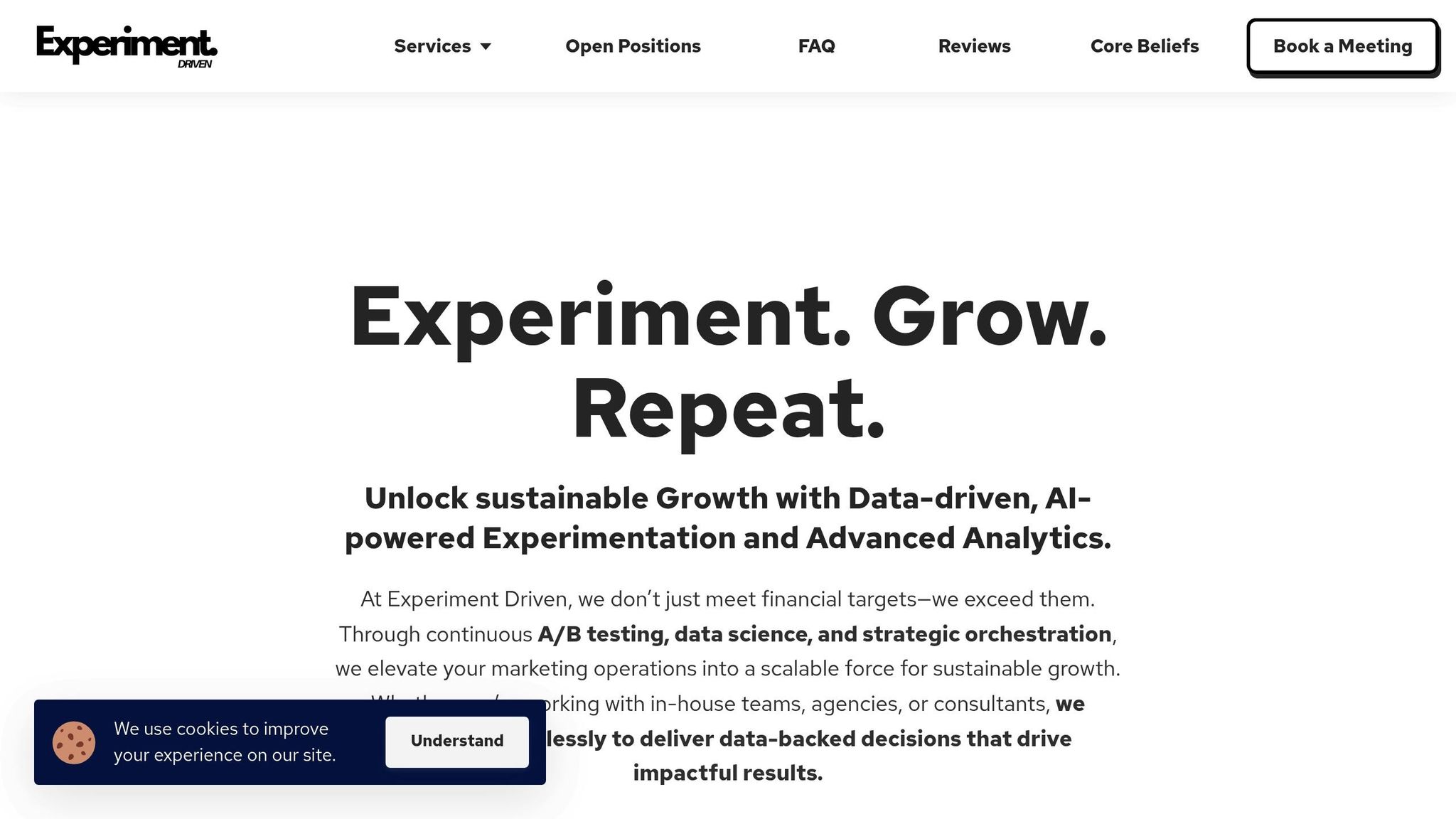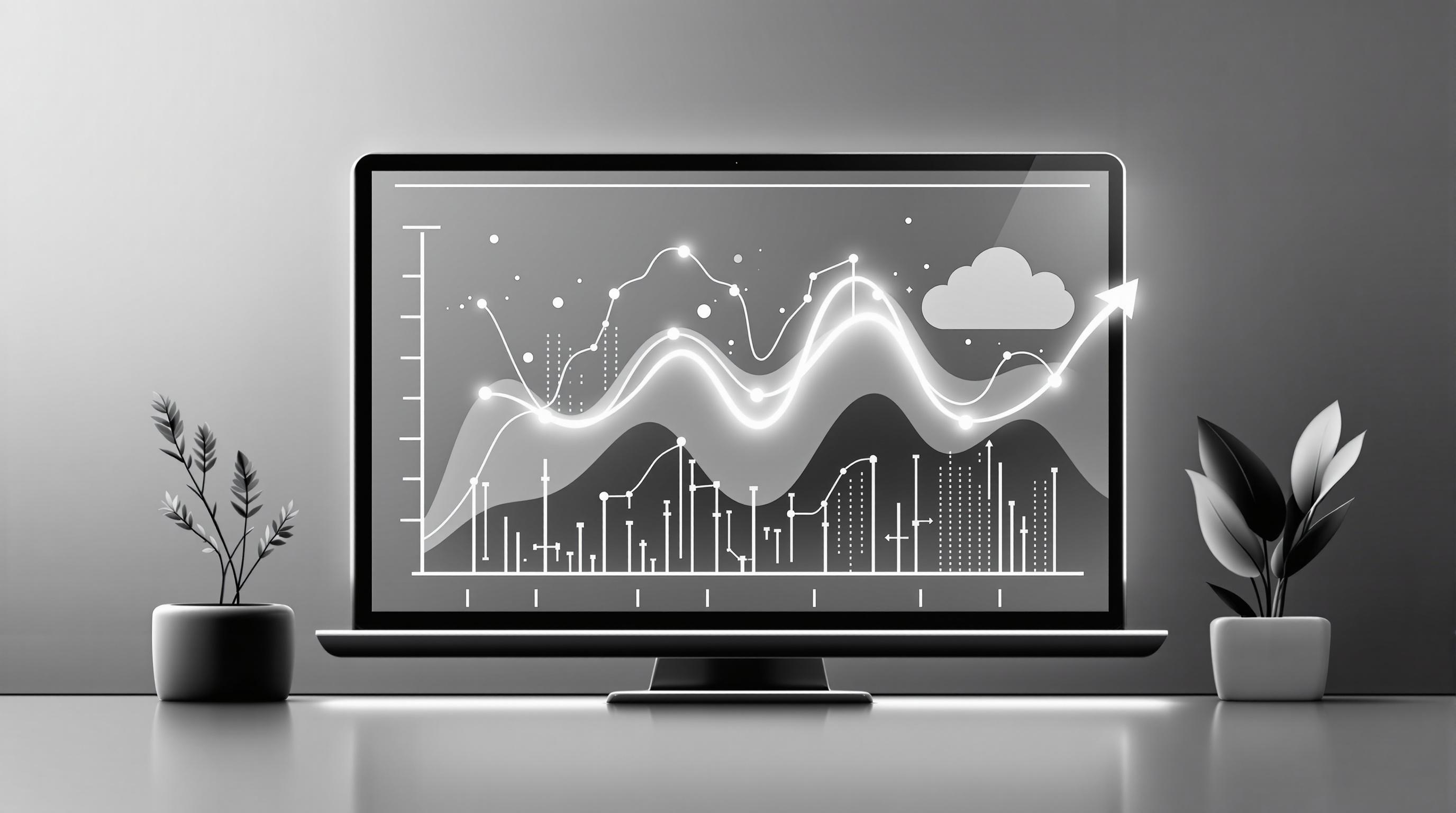AI feedback loops are transforming marketing by using real-time data to improve campaigns automatically. Here's what you need to know:
- What it does: AI systems collect, analyze, and adjust campaigns based on live performance data.
- Why it matters: Companies have cut customer acquisition costs by up to 46% and increased revenue by 35% using AI-driven strategies.
- How it works: These systems use predictive analytics, pattern recognition, and anomaly detection to optimize campaigns continuously.
- Key benefits: Real-time adjustments, better budget allocation, and improved ROI tracking.
Main Parts of AI Marketing Feedback Loops
Getting and Managing Data
Modern AI marketing systems gather data from multiple sources at the same time. These sources include customer interactions, campaign performance metrics, and market trends. The secret to success lies in setting up dependable data pipelines that feed directly into AI analysis tools.
For example, a SaaS company improved data access speed by 80% by:
- Collecting real-time data from social media, emails, and website analytics
- Automating processes for cleaning and standardizing data
- Storing data in a centralized system with clear segmentation
- Continuously monitoring data quality to ensure reliability
AI Analysis Methods
AI tools process marketing data using advanced algorithms to uncover patterns and opportunities that human analysts might miss. These systems can handle massive amounts of data in real time, delivering insights that allow for quick campaign adjustments.
Here are three main types of analysis and their benefits:
| Analysis Type | Purpose | Impact |
|---|---|---|
| Predictive Analytics | Forecast campaign performance and behavior | Helps allocate budgets effectively |
| Pattern Recognition | Spot elements of successful campaigns | Sharpens creative strategies |
| Anomaly Detection | Identify unusual performance changes | Allows for quick issue resolution |
These insights feed into a continuous learning process, ensuring campaigns are refined as they progress.
Learning and Improving
The real strength of AI feedback loops is their ability to improve over time. As more data is processed, the AI becomes better at making predictions and offering recommendations. It continuously tests variations, tracks real-time performance, and adjusts campaign settings based on both past and current data.
This constant learning doesn’t just fine-tune individual campaigns - it also enhances the entire feedback loop, leading to better results over time. Industries using AI-driven systems have consistently seen improved marketing outcomes through this iterative process.
Measuring Marketing Success with AI
Live Performance Tracking
AI has transformed how marketers keep tabs on campaigns in real time. These advanced systems can monitor multiple channels simultaneously, offering instant insights into how campaigns are performing. This eliminates common tracking blind spots and allows teams to make immediate adjustments.
With this level of visibility, marketing teams can:
- Keep an eye on metrics across various channels
- Spot underperforming areas quickly
- Reallocate budgets and tweak targeting instantly
- Track return on investment (ROI) as it happens
This kind of real-time monitoring naturally shifts the focus toward specific, impactful marketing metrics.
Key Marketing Metrics
AI tools are particularly effective at analyzing the metrics that matter most for business growth. They process large datasets to provide insights that can shape marketing strategies.
| Metric Category | What AI Measures | How It Helps |
|---|---|---|
| Customer Value | Lifetime Value (LTV) | Improves retention efforts |
| Acquisition | Cost per Customer (CAC) | Boosts ad spend efficiency |
| Channel Performance | Attribution & ROI | Highlights top channels |
| Campaign Success | Conversion Rates | Refines creative strategies |
For instance, a pet tech company cut its customer acquisition costs by 46% in just three months by leveraging AI-driven metrics. These insights allow businesses to fine-tune their efforts based on real-time data.
Quick Campaign Updates
AI feedback loops make it easier to adjust campaigns on the fly. For example, a Home & Garden E-Commerce company saw a 35% revenue jump in six months by using AI to overhaul its paid search strategy.
With AI, you can monitor trends as they emerge, refine campaigns quickly, and test new strategies without waiting for outdated reporting cycles. This dynamic approach keeps your campaigns sharp and responsive to changing market conditions.
Setting Up AI Feedback Loops
Organizing Your Data
To get started, connect data from internal, external, and customer sources. Here's a breakdown:
| Data Source Type | Purpose | Key Metrics |
|---|---|---|
| Internal Data | Track business performance | Revenue, Customer Lifetime Value (LTV), Sales Cycles |
| External Data | Assess market trends | Ad Costs, Campaign Results, Engagement |
| Customer Data | Understand behavior | Purchase History, Interactions, Demographics |
Bringing these sources together gives you a complete picture of your marketing performance. This approach links external results directly to your business goals and helps eliminate data gaps.
Testing Your Strategies
Experimentation is key to refining your marketing efforts. Use A/B testing alongside AI tools to predict results and pinpoint successful strategies.
Here’s how to approach testing:
- Begin with small, single-channel experiments
- Record every test and its return on investment (ROI)
- Scale up approaches that show strong results
- Adjust or stop weaker strategies early using AI insights
Keep a centralized log to track outcomes, avoid repeating mistakes, and ensure everyone has access to past learnings. This makes it easier for teams to collaborate effectively.
Coordinating Teams
To make AI feedback loops work, teams need to collaborate smoothly. Align everyone around a shared key metric, provide real-time dashboards for transparency, hold regular cross-functional meetings, and keep communication open between marketing, data, and tech teams.
The goal is to turn insights into quick, coordinated actions that drive results.
sbb-itb-d4df0e6
Unlocking Market Leadership with AI Feedback Loops
Results and Tips
Building on the setup and measurement strategies already covered, here's a closer look at how AI feedback loops can improve marketing efforts, along with practical advice for getting the most out of them.
Key Benefits
AI feedback loops bring several measurable benefits to marketing campaigns, including:
- Real-Time Optimization: Make immediate adjustments to campaigns based on live performance data.
- Predictive Analytics: Forecast future revenue and estimate customer lifetime value with greater accuracy.
- Increased Efficiency: Automate repetitive tasks, freeing up your team for higher-value work.
- Better Data Clarity: Gain clearer insights into attribution and performance metrics.
- Faster Growth: Quickly spot and scale strategies that are delivering results.
Tips for Success
Want to get the most out of AI-driven marketing feedback loops? Keep these tips in mind:
-
Integrate Your Data
Combine external metrics with internal data to ensure every insight aligns with your business goals. -
Set Up Testing Frameworks
Create a structured approach to testing. Use data-driven experiments, log results centrally, track ROI regularly, and scale successful strategies quickly. -
Encourage Team Collaboration
Connect marketing, sales, and product teams. Share real-time dashboards, focus on a shared key metric, and hold regular cross-team meetings to stay aligned.
Conclusion
Main Points
AI feedback loops are reshaping how marketing strategies are optimized. These systems allow for smarter, real-time decisions by continuously collecting and analyzing data. Benefits include automated tracking, predictive analytics, and the ability to scale strategies quickly. Many industries have already seen reduced costs and increased revenue thanks to these tools. This underscores the importance of a data-driven, integrated approach.
Experiment Driven Services

AI feedback loops deliver real results, and Experiment Driven's platform is a prime example of how this works. With real-time dashboards and advanced analytics, they’ve consistently helped clients achieve measurable improvements across various industries.
Their platform focuses on:
- Ongoing experimentation and testing based on data
- Real-time tracking of performance across marketing channels
- AI tools designed to uncover hidden growth opportunities
- Aligning teams with shared metrics and goals
- Optimizing and testing creative strategies
These features help businesses create effective AI feedback loops, boosting growth and improving marketing outcomes.

